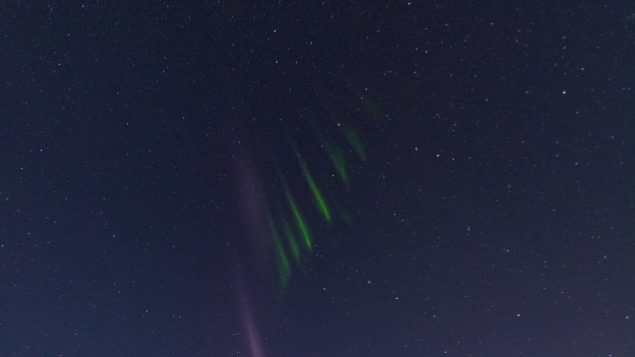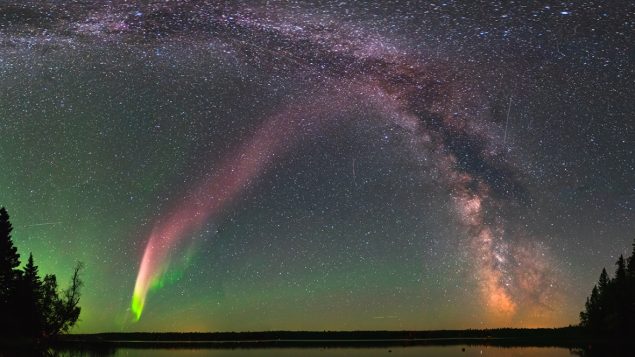Steve is what amateur scientists called another magnificent light show taking place over Alberta.
Steve actually stands for “Strong Thermal Emission Velocity Enhancement”.
Scientists were initially surprised by the discovery and are now working with the hobbyists to explain the origin.
Narrow arches of purple light with green fence-like structures were first noticed in 2014.
Aurora-chaser, Chris Ratzlaff, has been chasing the northern lights, the aurora borealis, since 2010.
“Steve was something entirely new”
The 45-year-old software product manager from Calgary, said it was after a night of watching the aurora, from just north of Calgary, that he looked straight up and saw a dim purple light in a narrow arch.
He first thought it was a contrail left by an airplane. but when that didn’t seem to explain it, he got in touch with some of his colleagues in the Alberta Aurora Chasers group.
It was a mystery to all of them.
More reports started coming into the group’s Facebook page, from further afield than Alberta.
Then in 2016, a group of aurora watchers were gathered in Calgary one night.
Eric Donovan, a professor of physics and astronomy at the University of Calgary was among the group when photographer Neil Zeller, mentioned that he’d taken a picture of a proton arc.
“I said, ‘No you didn’t,’ because a proton aurora is never visible to the naked eye,” Donovan told the CBC’s science reporter, Nicole Mortillaro.

Steve initially had scientists stumped because it seemed to be separate from the northern lights displays that it accompanied. (Notanee Bourassa/CBC)
“Then he showed me a photograph … and it was beautiful, but I didn’t know what it was.”
The group did agree it was not a proton arc and proceeded to come up with a non-scientific name for it.
Ratzlaff came up with ‘Steve’.
Then others began seeing Steve, including the European Space Agency satellite Swarm
It has an electric field instrument from the University of Calgary, and was flying through Steve at just the right moment to collect data on what was going on in the atmosphere.
“There are four pieces here, and if you take any one of those four pieces out, this can’t happen,” Donovan said of the research.
And Mortillaro says, “The images and the data provided confirmation: Steve was something entirely new.”
A new aurora, and scientists are crediting citizen scientists for the discovery.
They will continue studying the Earth’s atmosphere and the inter-connectivity: how the upper and lower parts influence each other.
So wherever you may be looking up into the night sky, if you see Steve, he came from Canada.
(With files from CBC)







For reasons beyond our control, and for an undetermined period of time, our comment section is now closed. However, our social networks remain open to your contributions.